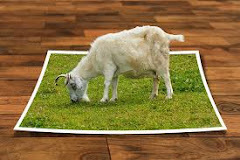Photoshop 3D Modeling Guide - Step By Step


Graphic design is a vast field that encompasses a wide range of skills and specializations. Within the graphic design industry, there are many different types of graphic designers, each with their own unique set of skills, knowledge, and experience. In this article, we will explore some of the most common types of graphic designers and what they do.
Brand identity designers focus on creating and maintaining a consistent visual identity for a brand. They work with companies to develop logos, color schemes, typography, and other visual elements that help establish a brand's personality and values. They ensure that all the brand's visual elements are cohesive and consistent across all platforms and marketing materials.
UX designers are responsible for creating user-centric designs for websites, mobile apps, and other digital products. They focus on creating designs that are easy to use and navigate, with intuitive interfaces and seamless user experiences. They conduct user research and testing to understand user needs and preferences, and use that information to inform their design decisions.
UI designers are responsible for the look and feel of digital products, including websites, mobile apps, and other digital interfaces. They focus on creating visually appealing designs that are easy to navigate and use. They work closely with UX designers to ensure that the user interface is intuitive and user-friendly.
Web designers are responsible for creating websites that are visually appealing, easy to navigate, and functional. They work with clients to develop the overall look and feel of the website, including color schemes, typography, and layout. They also ensure that the website is responsive and compatible with all devices, including desktops, tablets, and smartphones.
Print designers specialize in designing printed materials such as brochures, posters, packaging, and other physical products. They work with clients to develop the overall design, including typography, color schemes, and layout. They ensure that the final product is visually appealing, easy to read, and effectively communicates the client's message.
Motion graphics designers create animated graphics and visual effects for films, television shows, and other digital media. They use specialized software to create 2D and 3D animations, and may also work with sound designers to create audio effects. They must have a strong understanding of visual storytelling and be able to create engaging and compelling visual content.
Game designers are responsible for creating the overall concept and gameplay of video games. They work with teams of developers, artists, and other designers to create engaging and immersive gaming experiences. They must have a strong understanding of game mechanics, storytelling, and user experience design.
Environmental designers specialize in designing physical spaces, such as retail stores, trade show exhibits, and museums. They use a variety of design techniques to create engaging and interactive environments that tell a story and immerse visitors in a brand or experience. They must have a strong understanding of space planning, lighting, and other elements that contribute to the overall experience.
Package designers specialize in designing packaging for products, such as boxes, bags, and bottles. They work with clients to develop the overall design, including graphics, typography, and color schemes. They must ensure that the packaging is visually appealing, functional, and effectively communicates the product's message.
Illustration designers specialize in creating hand-drawn or digital illustrations for a variety of purposes, including editorial design, advertising, and children's books. They use a variety of techniques and styles to create visually compelling illustrations that effectively communicate the intended message.
Thanks for this information sir
ReplyDeleteAnother amazing post
ReplyDelete